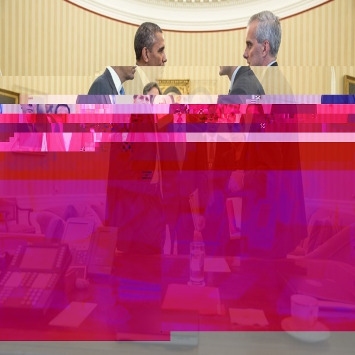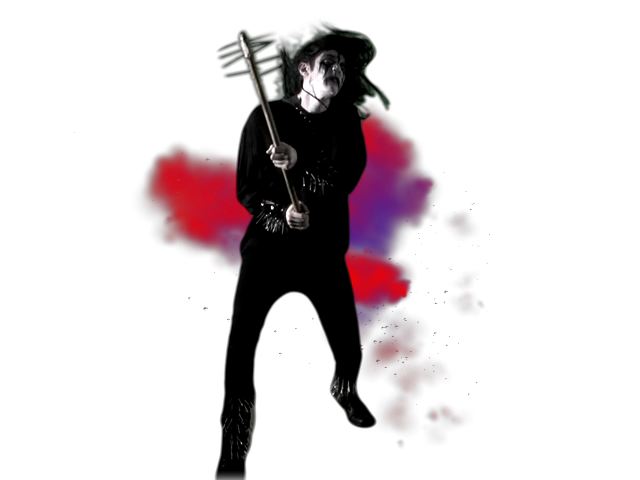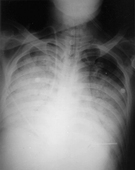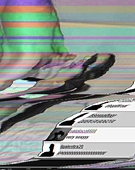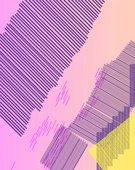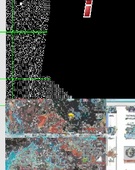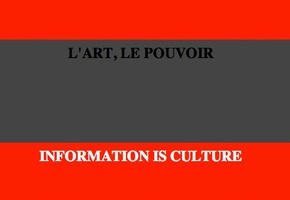This image is created every six hours by an automated computer program that downloads a recent photo from the Whitehouse.gov website as well as a report published by The Bureau of Investigative Journalism listing U.S. covert drone war casualty estimates. The text file of casualty estimates is literally inserted into the binary code of The White House photo. The drone war information becomes hidden from view, but corrupts the image producing visual distortion often referred to as a glitch. This work uses digital leftovers, consisiting of information either usually forgotten, or in the case of the drone war information, it is usually hidden, and in the process this cruft re-generates a new image by altering the data, which then reminds us of it's origin.
Full Description
Data Loss Cruft (Corruption)
This cruft algorithm downloads a recent photo from the Whitehouse.gov website as well as a report published by The Bureau of Investigative Journalism listing U.S. covert drone war casualty estimates. The text file of casualty estimates is literally inserted into the binary code of The White House photo. The drone war information becomes hidden from view, but corrupts the image producing visual distortion often referred to as a glitch. This work uses digital leftovers, consisiting of information either usually forgotten, or in the case of the drone war information, it is usually hidden, and in the process this cruft re-generates a new image by altering the data, which then reminds us of it's origin. Covert Drone War Casualty Estimates
— Casualty Estimates, CIA Drone Strikes. Retrieved from
http://www.thebureauinvestigates.com/category/projects/drones/
Further Resources The Bureau of Investigative Journalism The Bureau pursues journalism which is of public benefit. They undertake in depth research into the governance of public, private and third sector organisations and their influence. They make their work freely available under a Creative Commons licence.
Covert Drone War provides a full dataset of all known US drone attacks in Pakistan, Somalia and Yemen. This analysis has changed the public’s understanding of US actions and revealed that under Obama over 3,000 people, including nearly 500 civilians, have been killed by drones. The findings have been used widely in media outlets including the New York Times, Pakistan’s Dawn, and the BBC. In 2013 the Drones team won the Martha Gellhorn Award for Journalism, was invited to give evidence to the UK’s All Party Parliamentary Group on Drones and was commended by Jamie Shea, assistant deputy general secretary, NATO and Christof Heyns, United Nations special rapporteur on extra judicial killings.
Work metadata
- Year Created: 2013
- Submitted to ArtBase: Wednesday Sep 18th, 2013
- Original Url: http://www.robertspahr.com/work/dataloss/
-
Work Credits:
- robertspahr, primary creator
Take full advantage of the ArtBase by Becoming a Member
Artist Statement
I make art from the digital leftovers produced by the main stream media as well as the digital leftovers we create as individuals left behind on social networking sites, and scattered across the web. I write automated computer programs that collect these digital leftovers by scraping them from the web, and remixing them into a digital collage, sometimes these digital leftovers become an image, a video, or text-based poetry. I call this work 'Cruft', which is a computer hacker term defined as an unpleasant substance; excess; superfluous junk; and redundant or superseded computer code.
The ideas and images presented to us by the media affect our world view. As the ever present cable news cycle pushes a daily message of fear, filled with political polarization; domestic and foreign terrorism; recent kidnapped white girls; celebrity scandals; and the imminent threat of hurricane, earthquake or flood, I began to think about how these digital images and text operated, one day influencing our daily discourse, the next day vanishing without a trace. Digital leftovers reminded me of redundant computer programming. Code that was once useful, but later forgotten and obsolete.
